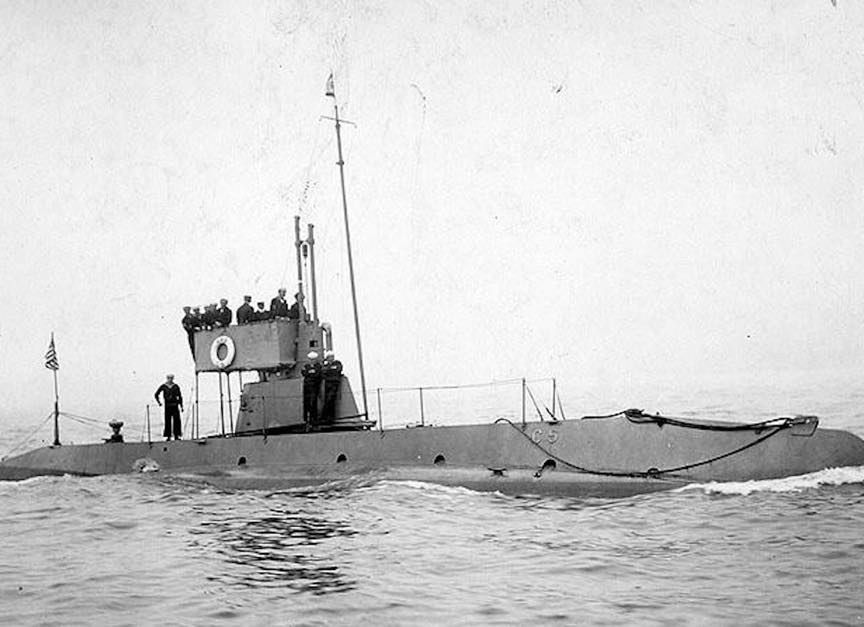
C-5
(SS-16: dp. 238; 1. 105'4"; b. 12'11"; dr. 10'; s. 10 k.;
epl. 15; a. 2 18" tt.; cl. C)
C-5 (Submarine No. 16) was launched 16 June 1908 as Snapper by Fore River Shipbuilding Co., Quincy, Mass., under a subcontract from Electric Boat Co.; sponsored by Miss A. Nicoll; and commissioned 2 February 1910, Ensign C. W. Nimitz in command. She was renamed C-5 on 17 November 1911.
Snapper fitted out at the Boston Naval Yard, then began 3 years training and tests along the east coast and in Chesapeake Bay. She ran experiments with radio, submarine signaling apparatus, different types of batteries, and other equipment, all of which has since be come standard in ships of the "Silent Service." She joined in Fleet maneuvers helping to develop submarine tactics in submerged attacks on combatant ships, and engaged in operations with airplanes in the infancy of naval aviation. Highlights of the period were the reviews of the Fleet by President William H. Taft and Secretary of the Navy George von L. Meyer, in November 1911 and October 1912.
On 20 May l 913, C-5 and her sisters of the First Group, Submarine Flotilla, Atlantic Fleet, commanded by Lieutenant (junior grade) R. S. Edwards in C- 3, departed Norfolk in tow of tender Castine and collier Mars, for Guantanamo Bay, Cuba. From her arrival on 29 May, C-5 exercised in Cuban waters, principally conducting torpedo practices, until 7 December 1913. On that date C-5 and her sisters of the redesignated First Division, escorted by four surface ships, sailed for Cristobal, C.Z. Five days later the ships completed the 700 mile passage, at that time the longest cruise made by United States submarines under their own power.
C-5 operated in Panamanian waters, conducting exercises, and patrolling on harbor defense as well as studying the suitability of various ports of Panama for submarine bases. C-5 was decommissioned at Coco Solo, C.Z.. 23 December 1919, and sold 13 April 1920.
Fleet Admiral Nimitz writes of C-5 (Submarine No. 16), USS Snapper: "Her Craig gasoline engines were built in Jersey City by James Craig an extraordinarily wise and capable builder. Craig was a self-taught engineer who began as a draftsman in the Machinery Division of the New York Navy Yard—and who started his 'Machine & Engine Works' in Jersey City at a later date. C-5's engines were excellent as were also the Craig diesel engines he built for a subsequent submarine. These engines were designed and built by Craig and I have never forgotten his 'Forward'—to the pamphlet of Operating Instructions which read briefly—some. what like this
“No matter what the designer and the builder may have planned for these engines—and no matter what the operator may try to do with them—the Laws of Nature will prevail in the End'. How True! !"
